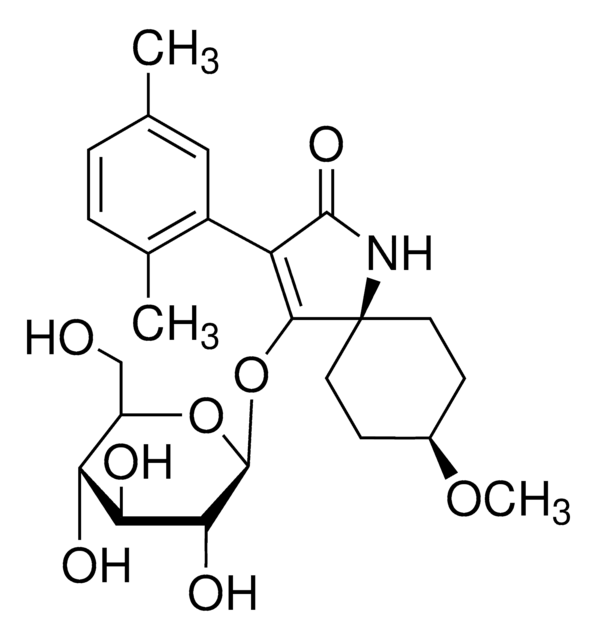33226
Glicina
puriss. p.a., reag. Ph. Eur., buffer substance, 99.7-101% (calc. to the dried substance)
Sinónimos:
Glicocola, Ácido aminoacético, Ácido aminoetanoico
About This Item
Productos recomendados
agency
USP/NF
reag. Ph. Eur.
Quality Level
grade
puriss. p.a.
assay
99.7-101% (calc. to the dried substance)
form
crystalline powder
technique(s)
IR spectroscopy: suitable
impurities
≤0.001% heavy metals (as Pb)
≤0.02% ammonium (NH4)
≤0.1% water (Karl Fischer)
≤1.0% ninhydrin-positive substances
ign. residue
≤0.05% (as SO4)
loss
≤0.5% loss on drying, 105°C, 2 h
pH
5.9-6.4 (20 °C, 5%)
pKa (25 °C)
(1) 2.35, (2) 9.60
2.35
mp
240 °C (dec.) (lit.)
anion traces
chloride (Cl-): ≤30 mg/kg
sulfate (SO42-): ≤20 mg/kg
cation traces
Fe: ≤5 mg/kg
suitability
in accordance for identity (IR)
SMILES string
NCC(O)=O
InChI
1S/C2H5NO2/c3-1-2(4)5/h1,3H2,(H,4,5)
InChI key
DHMQDGOQFOQNFH-UHFFFAOYSA-N
Gene Information
rat ... Grin2a(24409)
¿Está buscando productos similares? Visita Guía de comparación de productos
Application
- A reactant in the natural soil clay-catalyzed cleavage and polycondensation with pyrogallol.
- A catalyst in the Knoevenagel reaction between aryl aldehydes and malononitrile to form a C=C bond.
- A reagent in the metal-free synthesis of biaryls from aryl sulfoxides and sulfonanilides via sigmatropic rearrangement.
Biochem/physiol Actions
Storage Class
11 - Combustible Solids
wgk_germany
WGK 1
flash_point_f
Not applicable
flash_point_c
Not applicable
ppe
Eyeshields, Gloves, type N95 (US)
Choose from one of the most recent versions:
¿Ya tiene este producto?
Encuentre la documentación para los productos que ha comprado recientemente en la Biblioteca de documentos.
Los clientes también vieron
Nuestro equipo de científicos tiene experiencia en todas las áreas de investigación: Ciencias de la vida, Ciencia de los materiales, Síntesis química, Cromatografía, Analítica y muchas otras.
Póngase en contacto con el Servicio técnico
